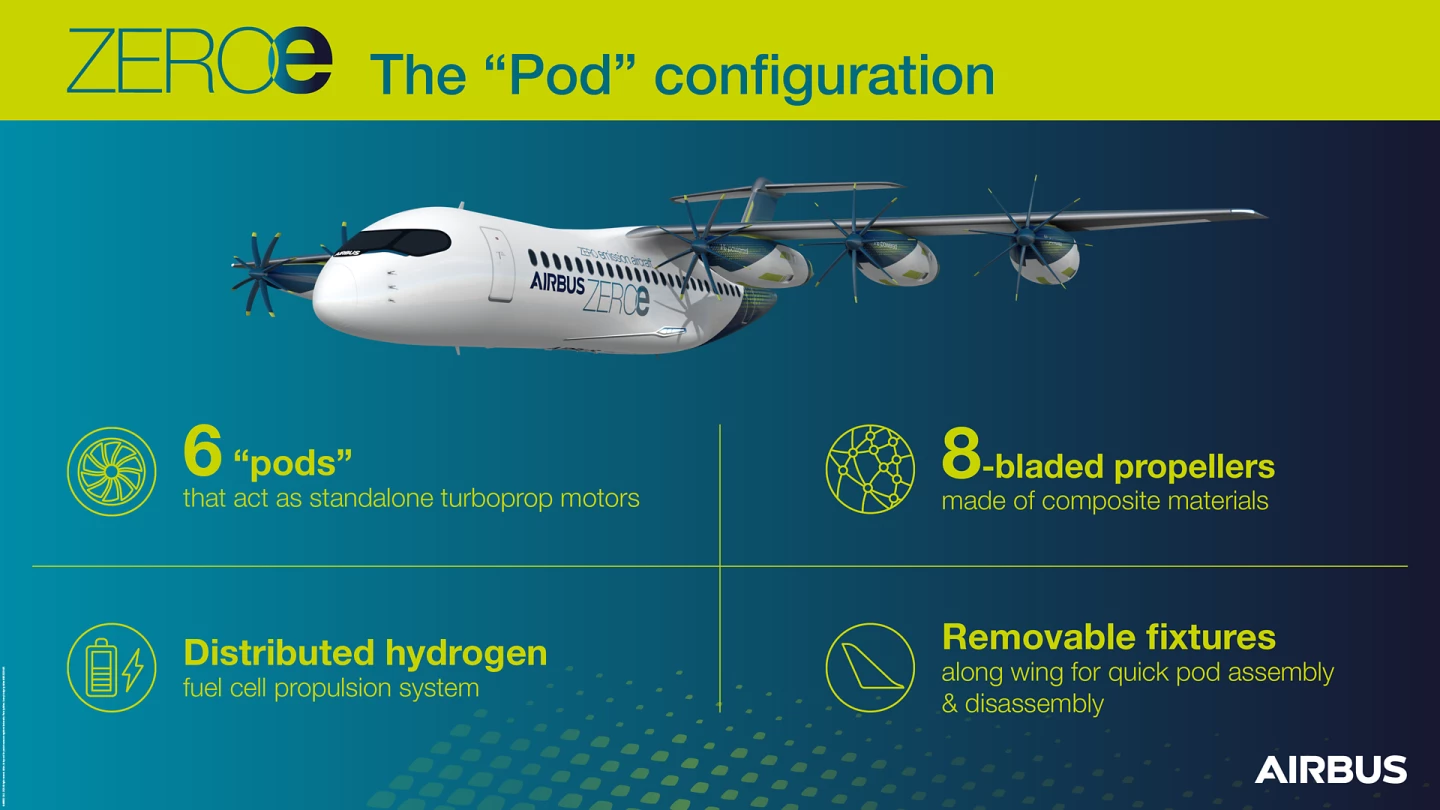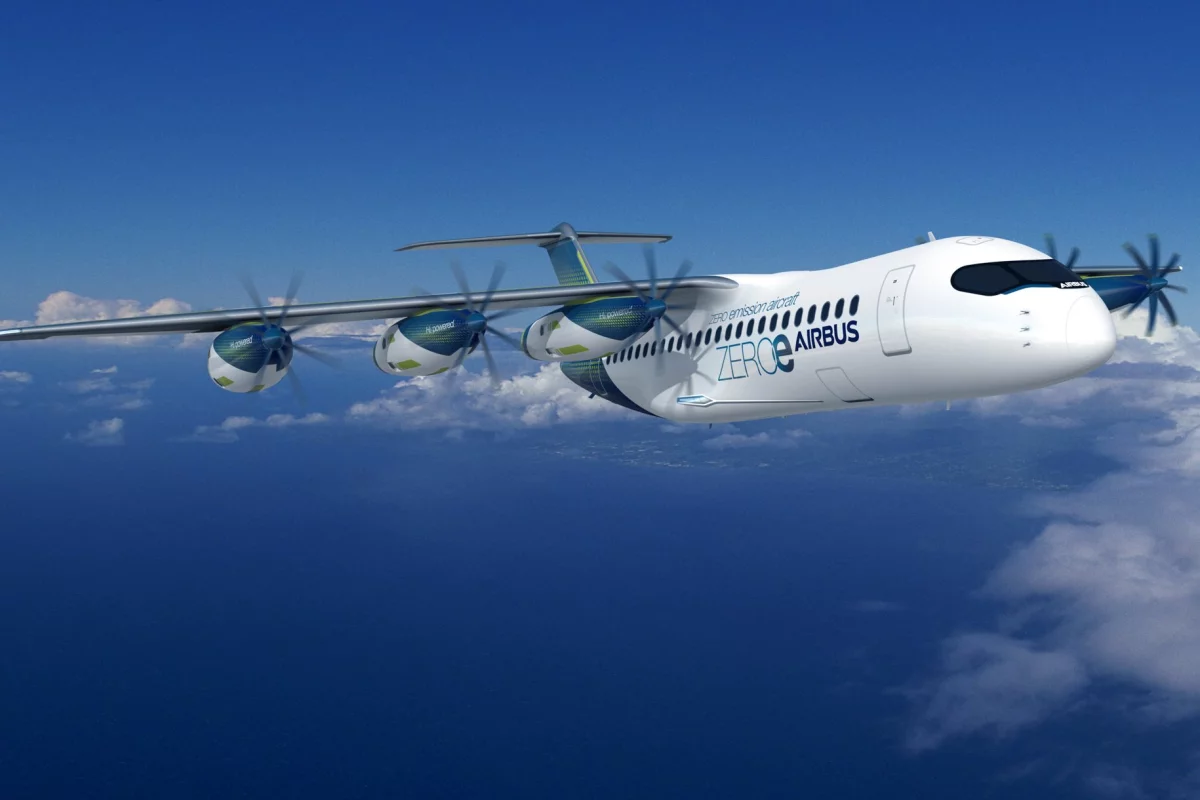With the move towards electric aviation comes new opportunities to explore what a powertrain looks like, and Airbus is experimenting with a new design that builds entire hydrogen propulsion units, tanks and all, into detachable pods along the wings.
Each of the six pods along the wings of the ZEROe concept includes a liquid hydrogen tank, a cooling system, a fuel cell, power electronics, electric motors, an eight-bladed lightweight composite propeller and all the necessary auxilliary equipment to run it as a standalone propulsion unit. Interestingly, there's no mention of a buffer battery, but then conventional aircraft like this use power in a constant and predictable fashion, so a little lag between throttle and props as the fuel cell catches up might not be an issue.
Not only can these pods detach easily from the wings (not too easily, hopefully), but the ZEROe team wants to make them highly modular, so they can be pulled apart quickly for maintenance, testing and simple component swap-outs.
Why hydrogen? Well, we can see a few advantages. With liquid hydrogen comes an energy density that rivals, or even exceeds jet fuel for long-range flights, but with zero local emissions and the potential to fill up on carbon-neutral renewable energy. It's a no-brainer for manufacturers to be looking ahead at hydrogen for clean aviation.

Why removable pods? Well, moving to an electric system gives you the opportunity to separate out the propulsion systems into independent units, offering excellent redundancy. If something goes wrong with one propulsion pod, you can shut it down completely or even jettison it over water, letting the flight controller re-balance thrust across the remaining pods.
It also frees up considerable space in the cabin; airline companies love to fill hollow tubes with as many people as possible, and moving the fuel tanks and the entire powertrain outside that hollow tube means extra seats and extra cargo capacity.
And of course, making each one a complete powertrain makes them ultra-swappable, so any issues can be handled at the operator's leisure without having to pull the plane out of service. Just stick a spare one on while the other one's in the workshop.
While Airbus has already taken out patents on this design, it's just one of many concepts the company is evaluating for the ZEROe program.
"This ‘pod’ configuration is a great starting point to nurture further inquiry into how we can scale up hydrogen technology to commercial aircraft," says Glenn Llewellyn, Airbus VP of Zero-Emission Aircraft. “This is one option, but many more will be conceptualized before we make a final selection, a decision that is expected by 2025."
Source: Airbus







